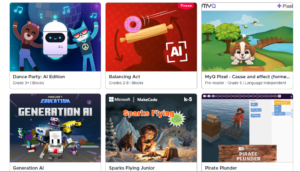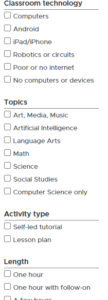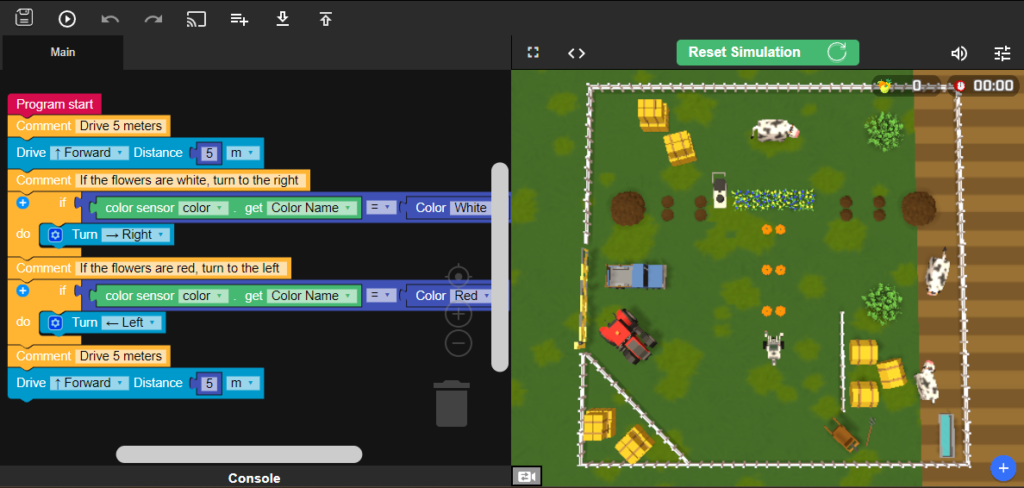During class when we were first presented with the task of exploring code, I was struck with panic. I have never been exposed to coding other than while talking to some of my university friends who were taking computer science classes. The way they described it went right over my head and seemed extremely complicated. However, I suppose this makes sense as they were learning how to code websites and games and more complex entities, using scripts such as Java, Python, and C++. To me, it seemed like I would have to learn a completely different language, and to some extent that is true however, there are resources out the to make this process a lot less daunting.
One such website is called Hour of Code. The concept is to teach code in a video game-like setting which makes the process of learning code more approachable and would be very engaging for students. It is geared towards everyone, from pre-readers to grade 9 and beyond.
There are a number of check boxes, as seen above, that allow for teacher and learners to select their available material, which subjects they would like to focus on, and generally modify their experience to best suit their needs.  Some that stood out to me is the pre-reader section as I believe this could be extremely helpful for English as a Second Language learners. Although most of the themes are aimed at pre-school level students, there appears to be several options that do not have a targeted age and are more generalized experiences.
Some that stood out to me is the pre-reader section as I believe this could be extremely helpful for English as a Second Language learners. Although most of the themes are aimed at pre-school level students, there appears to be several options that do not have a targeted age and are more generalized experiences.![]()
When I went to try out the program I selected an application from the grades 2-5 range. I thought this would give me the widest range of options when it came to difficulty. I decided on a program called Code Farm: Plant a Garden. Your goal is to create code for a robot to collect and/ or plant food on a designated path towards a target. When entering into the game you are greeted by a video outlining the game as well as how robots are used in real world farming settings. A link to the video can be found here.
The first mission sees you debugging already existing code which I think is a great way to learn the program. However, after this you are on your own for the next level. It does take some trial and error to get the spacing correct as there are no designated lines or square to indicate 1 meter which can prove a bit frustrating.

Here is an example of a debug level, where you must run the code to see the issue and then fix those mistakes so that your robot can collect all of the plants. The code does become fairly advanced fast as there are a lot of different things to think about all at once such as movement, sensors, and planting and plowing gadgets therefore I would recommend this game to someone who is at least slightly familiar with using the tools of coding.
Overall this was a pleasant and enjoyable experience and I am definitely going to be spending some time on the Hour of Code website to test out some programs for my classroom.
See you all next week!
Kyle,
I also had the similar reaction when we were assigned to code something. How am I supposed to do that? The websites we were given as resources were so great. For my assignment, I also used Hour of Code. I found it very user friendly, making you easily feel successful in the coding you were trying to accomplish. Planting a garden looks fun. How do you plan to uses coding in your future classroom?